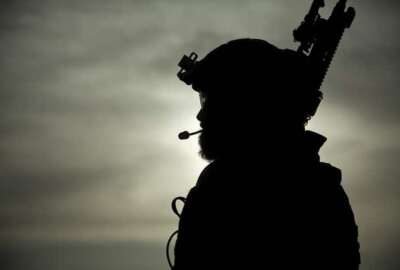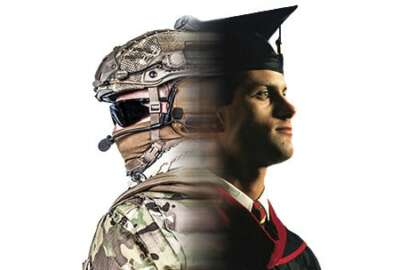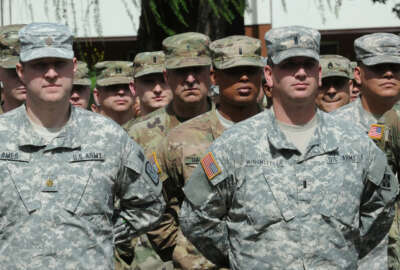
SOCOM ready for DoD’s shifting strategy, focused on personnel readiness
SOCOM's current focus is on improving the readiness and training of their forces, including improving the resiliency of their families.
The commanders of the U.S. Special Operations Command feel comfortably ahead of the curve regarding the shifting priorities of the new national defense strategy. They agree that the new focus on near-peer adversaries like China and Russia, and the technologies and innovations that will allow the U.S. to maintain superiority are firmly within their wheelhouse.
“SOCOM has a pretty good process that’s flexible and adaptable as the priorities coming out of the national capital region change,” Lt. Gen. Kenneth E. Tovo, commanding general of the U.S. Army Special Operations Command, told the Senate Armed Services subcommittee on Emerging Threats and Capabilities during an April 11 hearing. “We’ve got the ability to reevaluate where we have put our forces and for what purpose. I will say, if you look at our current worldwide disposition, we are already doing what the national defense strategy tells us to do.”
Instead, they said their current focus is on improving the readiness and training of their forces. Tovo said one big challenge has been finding the time to train, and address the expanding set of skills SOCOM requires in a threat environment that includes cybersecurity and a new paradigm of information warfare.
Meanwhile, both Lt. Gen Marshall B. Webb, commander of the U.S. Air Force Special Operations Command, and Maj. Gen Carl E. Mundy III, commander of Marine Corps Forces Special Operations Command, said they are trying to improve the ratio of time their troops spend deployed versus at home, what they called the deploy-to-dwell ratio.
Webb said 10 percent of his forces spend less than two months at home for every one month deployed. None of his forces are operating at a 1-1 ratio. Considering he said it is not unusual for some of his airmen to be on their 12th-14th deployments, that time at home is critical to maintaining readiness and the resiliency of their families.
“As we track our airmen, before they go out the door and as they return, using [Preservation of the Force and Families] resources, we see 98 percent of our airman return to ‘ready-to-deploy-again’ status within 90 days of deployment,” Webb said. “Obviously, these aren’t year-long deployments; they’re measured in months. But we’re kind of in uncharted territory.”
Adm. Timothy G. Szymanski, commander of Naval Special Warfare Command, also credited the POTFF initiative, which uses a holistic approach to caring for soldiers’ physical, mental, social and spiritual wellbeing, with cutting down treatment time, prolonging soldiers’ lives, and strengthening the resiliency of their families.
“Our people, not technology or any other particular capability, represent our most precious resource,” Mundy said. “It’s one we must preserve and cultivate as we look to the future.”
And those people are the key to implementing the new priorities in the national defense strategy. Szymanski said they are the ones that drive innovation in SOCOM, pushing to reduce risk while increasing agility and lethality.
“Most of our organizations were founded to be innovative in concept, and not technology,” he said.
That means technology is seen as another means to innovation, not the end. He said, for example, that the Navy’s SEAL teams were originally created as an innovative answer to clearing beaches for landing crafts. With today’s technology, that innovation might look different, but would still remain an innovative approach to the problem.
Szymanski said SOCOM is making progress with new technologies, though he could not discuss specific platforms in an open setting. But he said that AI and machine learning are helping to cut down analysis time, which is central to the shift in priorities to near-peer adversaries. Both China and Russia have discussed the military importance of decision speed.
SOCOM has also heavily invested in information operations, Tovo said. Operators are training for the digital space, learning social media and trend analysis, and how to exert influence in that environment.
“We have the knowledge and skills to operate in this domain,” Tovo said. “Much of the difficulty involves getting the appropriate authorities to do so.”
SOCOM is also ramping up to make prevention of the use of weapons of mass destruction one of its responsibilities. Lt. Gen. Scott A. Howell, vice commander of U.S. Special Operations Command, said SOCOM has reached out to interagency and international partners to look at the problem globally, develop priorities, and plan operations.
“There are no specific asks yet, because we’re still building the functional campaign plan, but I would say the interagency cooperation is exceptional in this area … staying well left of the shot is our goal here,” Howell said. “That’s success for us, and I think we’re well-postured with our interagency partners to be in position of advantage to do something when the opportunity arises.”
Copyright © 2024 Federal News Network. All rights reserved. This website is not intended for users located within the European Economic Area.
Daisy Thornton is Federal News Network’s digital managing editor. In addition to her editing responsibilities, she covers federal management, workforce and technology issues. She is also the commentary editor; email her your letters to the editor and pitches for contributed bylines.
Follow @dthorntonWFED





